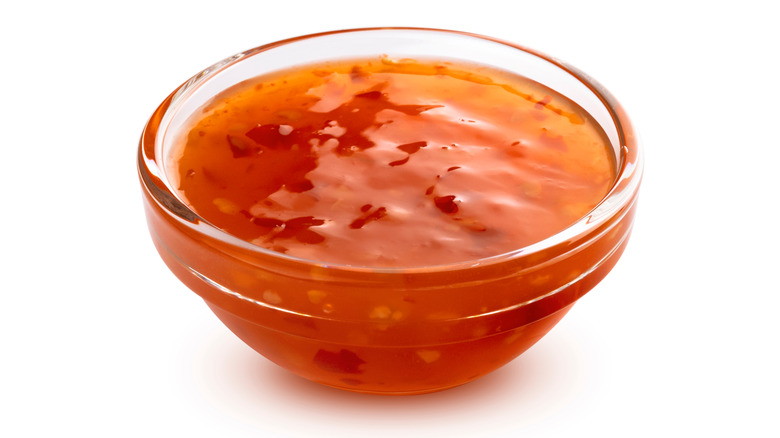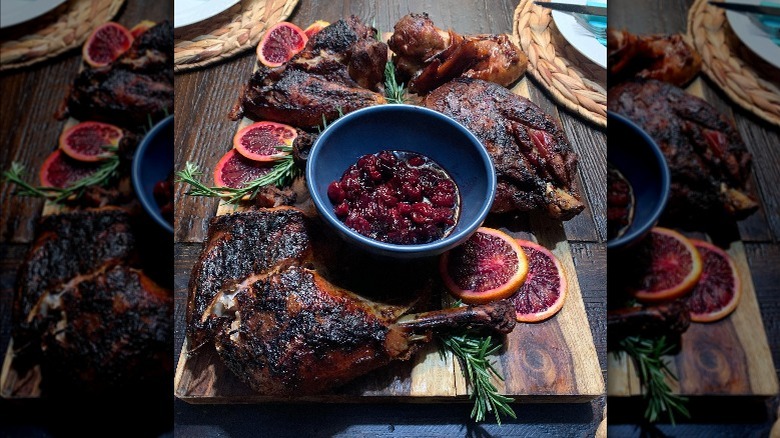Meet Gastrique, Europe's Version Of Sweet And Sour Sauce
Translating directly to "gastric" in English, the French "gastrique" can also refer to a classic sweet and sour sauce. However, gastrique is more than just a concoction for your stomach, it's also a tasty delight for the tongue. Technically, almost any sweet and sour ingredients will do, but usually, fruit and sugar are combined with vinegar or some other acidic liquid to form a gastrique.
That sugar is typically caramelized in a pan and then deglazed by dissolving it into vinegar. Oftentimes, other intense ingredients such as alliums are cooked alongside the sauce to give it extra flavor, then the final product is puréed and reduced to give it a heavy, uniform consistency. Such a fresh, pronounced dressing can help to elevate seared and savory dishes like meat and veggies. Just be careful to use it in moderation or else have your palette overwhelmed, and try it yourself with our cherry balsamic gastrique or duck breast with maple gastrique.
How does gastrique compare to sweet and sour?
Depending on how you define the American version of sweet and sour, it can actually be quite similar to gastrique. If your sweet and sour sauce is just sugar and vinegar or lime juice, then yeah, that's basically also a gastrique. If you want to get a little more complex and use ingredients such as brown sugar, ketchup, malt vinegar, onions, pineapple, and soy sauce, then your final product is indeed a bit more robust than the standard gastrique.
In terms of application, sweet and sour sauce is, of course, more often used with (American) Chinese food, specifically. That's because it originated in 18th century China and was popularized by Chinese immigrants in the United States circa the 19th century. Although it has more ingredients than gastrique, it can be as simple to make as mixing everything together in a saucepan and letting it reduce. No wonder this caught on!
Italy also has a sweet and sour
Technically, gastrique isn't Europe's only sweet and sour sauce. There's also Italy's agrodolce, consisting of garlic, onion, sugar, raisin, and wine vinegar. However, "agrodolce" literally translates to "sour sweet," so the recipe is ultimately rather flexible. Other common ingredients include currants, honey, and pine nuts. Red wine vinegar is traditional in places like Sicily, but chefs can also incorporate white wine, cider, or balsamic vinegars.
There are a couple different ways this sticky agrodolce is used. Italians frequently employ it as a condiment with dishes such as charcuterie boards and roasted veggies. It's also utilized as a spread on meaty and cheesy sandwiches, since the acidity breaks up the fatty flavors for a more well-rounded experience. Last but not least, agrodolce is put on grilled chicken, pork, or steak to complement their smokiness. Whether gastrique or agrodolce — America, Europe, or Asia — sweet and sour is a winning combination!


